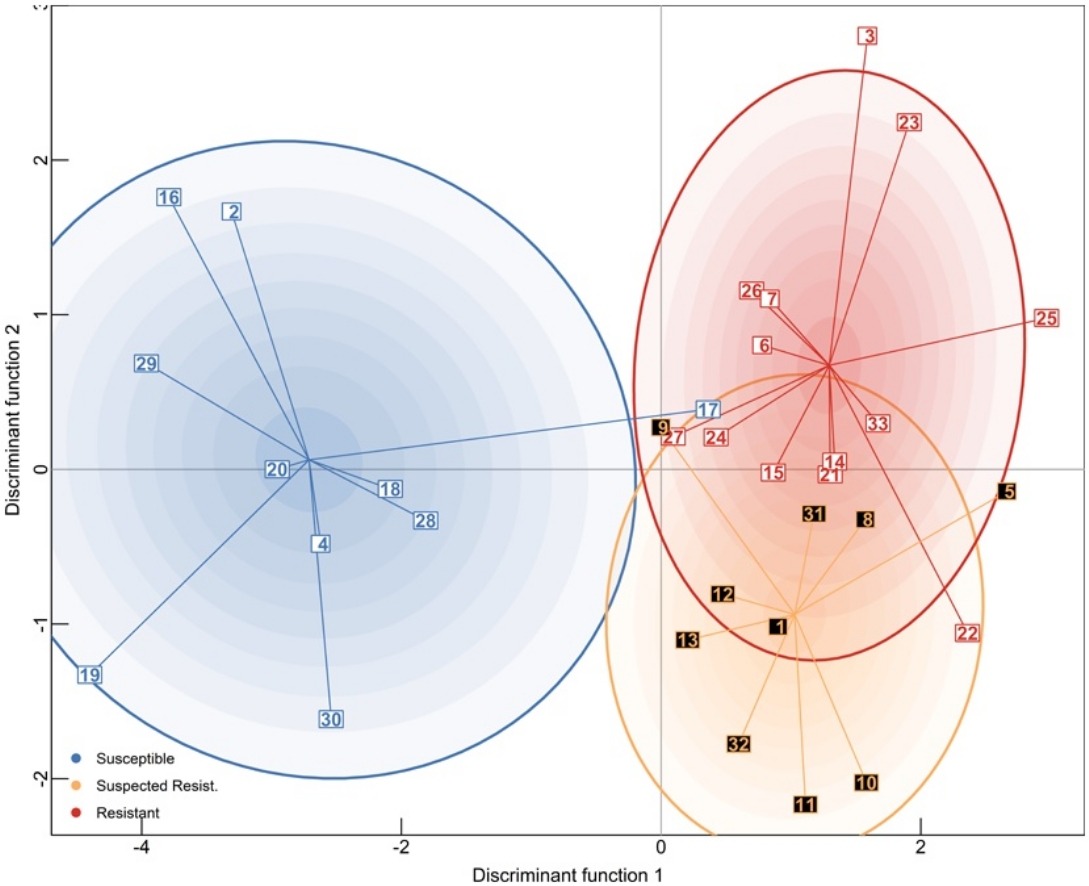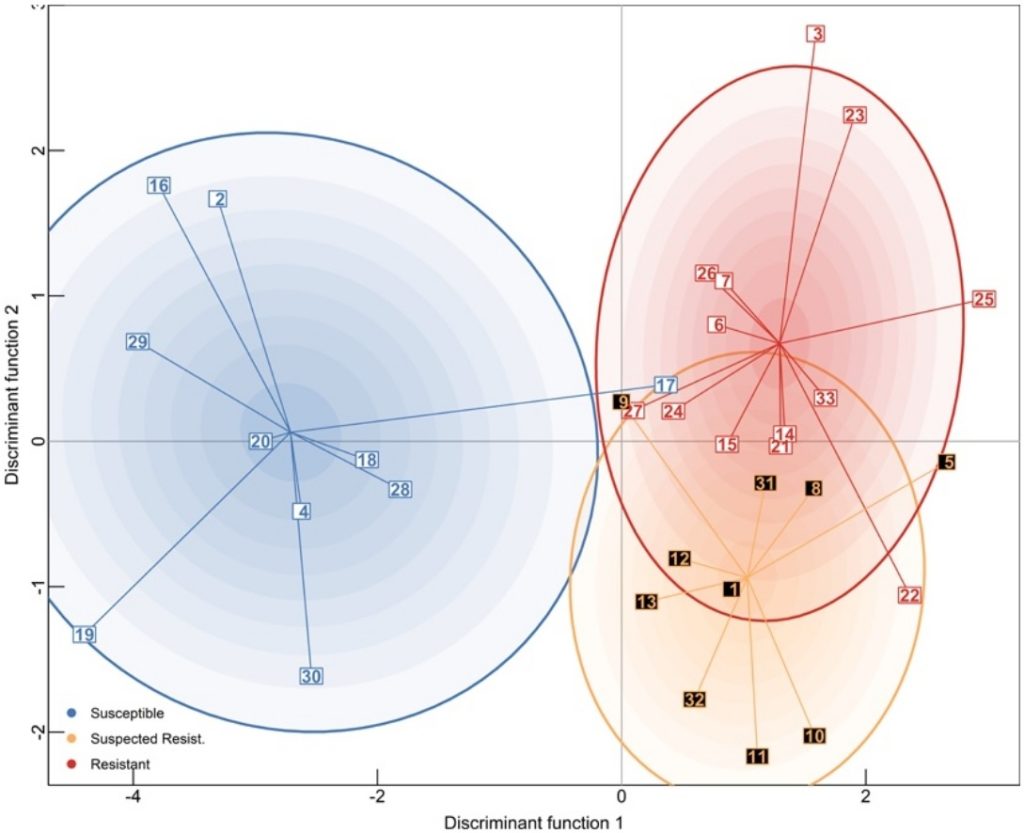Using Population Genetics to Examine Relationships of Dirofilaria Immitis Based on Both Macrocyclic Lactone-Resistance Status and Geography

Prevention of infection with canine heartworm (Dirofilaria immitis) is based on the compliant administration of macrocyclic lactone (ML) drugs. Resistance to ML drugs is well documented in D. immitis; however, there remains a paucity of information on the spatial distribution and prevalence of resistant isolates. This project aims to improve understanding of ML-resistance by using a population genetic approach. We developed a large panel of microsatellite loci and identified 12 novel highly polymorphic markers. These 12, and five previously published markers were used to screen pools of microfilariae from 16 confirmed drug-susceptible, 25 confirmed drug-resistant, and from 10 suspected drug-resistant field isolates. In isolates where microfilarial suppression testing indicated resistance, Spatial Principal Component Analysis (sPCoA), Neighbor Joining Trees and Bayesian clustering all revealed high genetic similarity between pre- and post-treatment samples. Somewhat surprisingly, the Neighbor Joining tree and sPCoA generated using pairwise Nei’s distances did not reveal clustering for resistant isolates, nor did it reveal state-level geographic clustering from samples collected in Georgia, Louisiana or Mississippi. In contrast, Discriminant Analysis of Principle Components was able to discriminate between susceptible, suspected-resistant and resistant samples. However, no resistance-associated markers were detected, and this clustering was driven by the combined effects of multiple alleles across multiple loci. Additionally, we measured unexpectedly large genetic distances between different passages of laboratory strains that originated from the same source infection. This finding strongly suggests that the genetic makeup of laboratory isolates can change substantially with each passage, likely due to genetic bottlenecking. Taken together, these data suggest greater than expected genetic variability in the resistant isolates, and in D. immitis overall. Our results also suggest that microsatellite genotyping lacks the sensitivity to detect a specific genetic signature for resistance. Future investigations using genomic analyses will be required to elucidate the genetic relationships of ML-resistant isolates.
Julie Sanchez, Guha Dharmarajan, Melissa M. George, Cassan Pulaski, Adrian J. Wolstenholme, John S. Gilleard, Ray M. Kaplan. 2020 Veterinary Parasitology; 283:109125. doi: 10.1016/j.vetpar.2020.109125.

